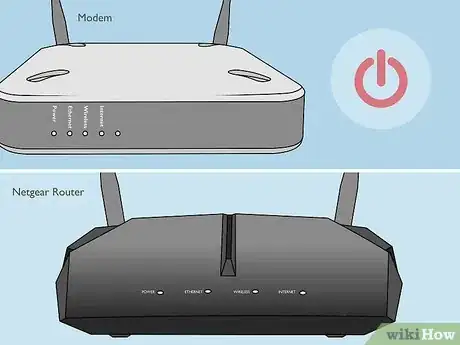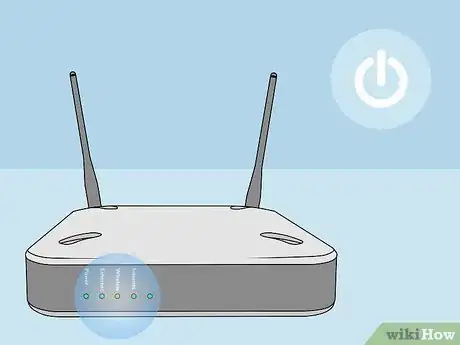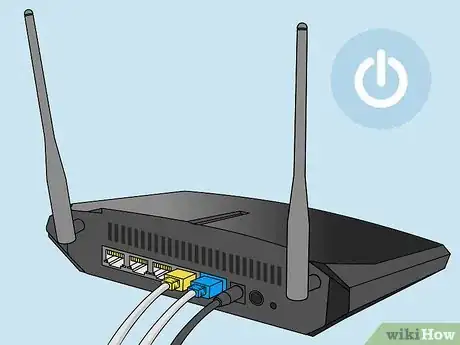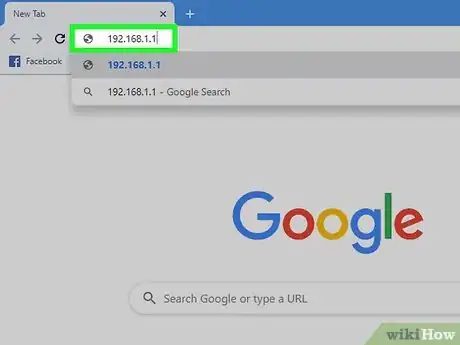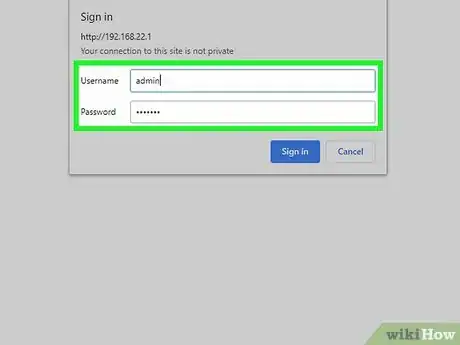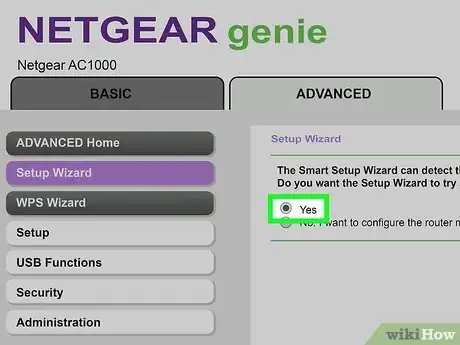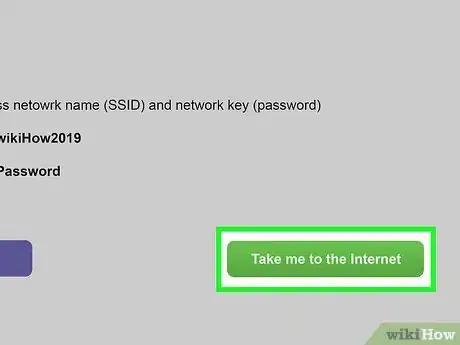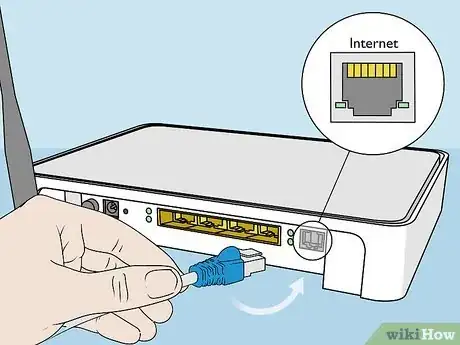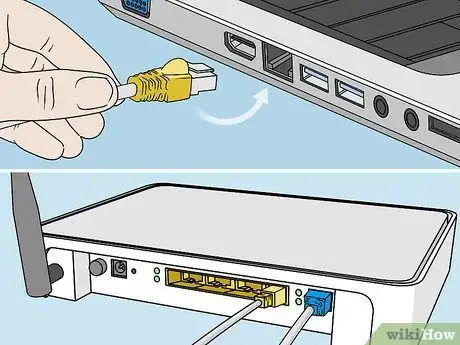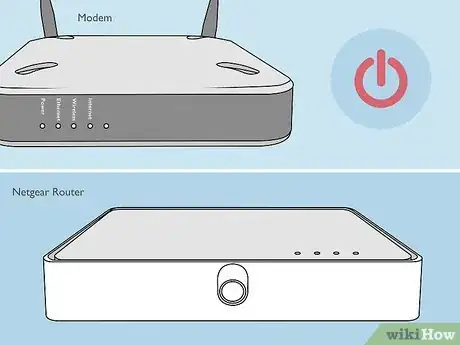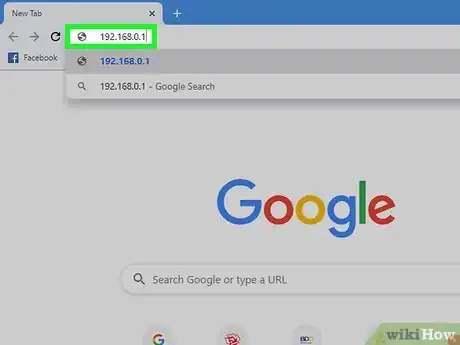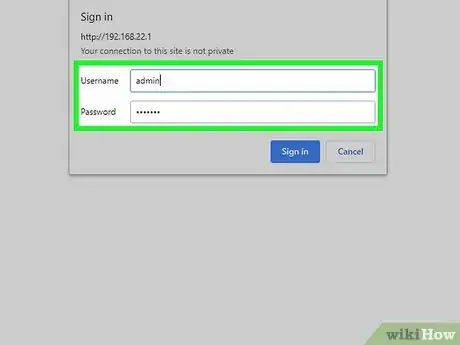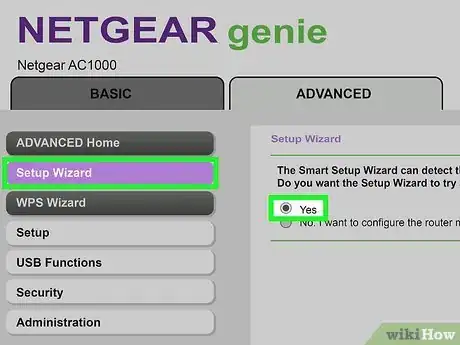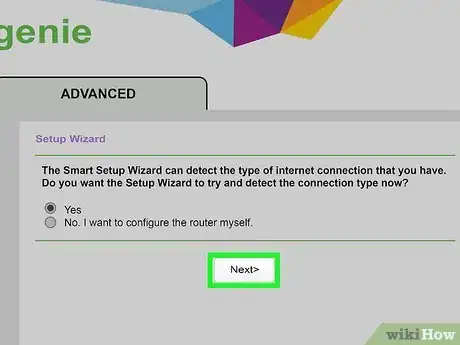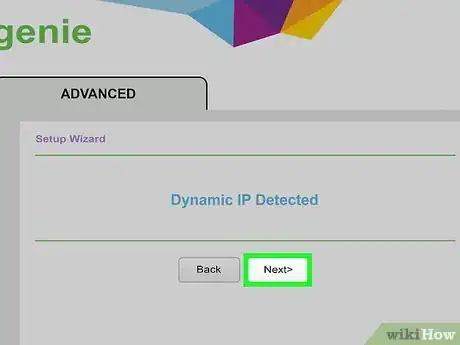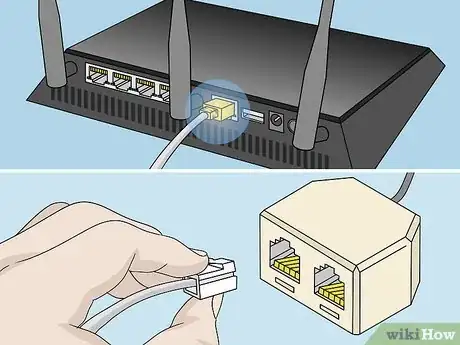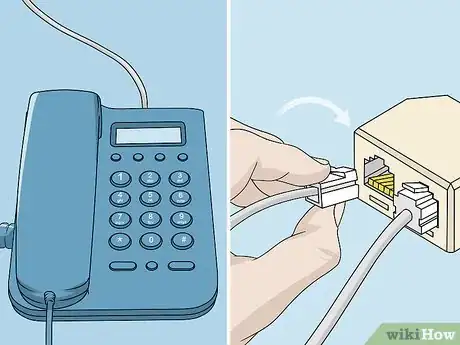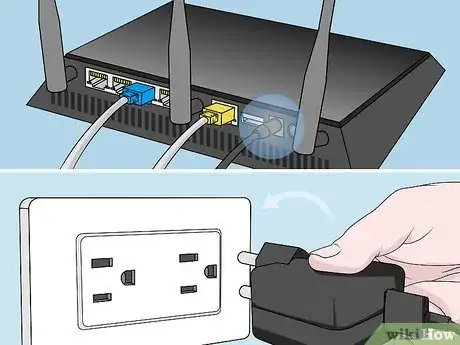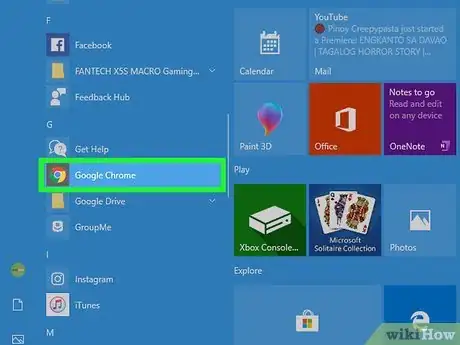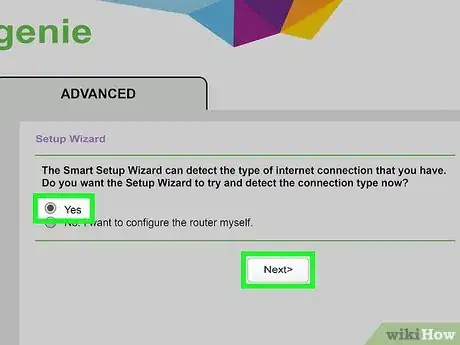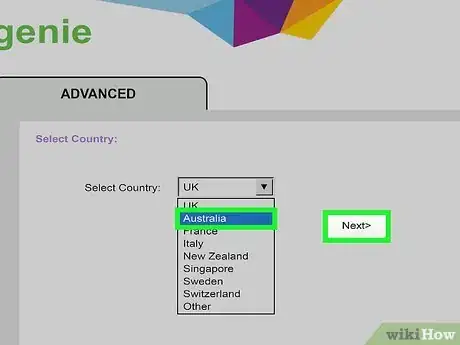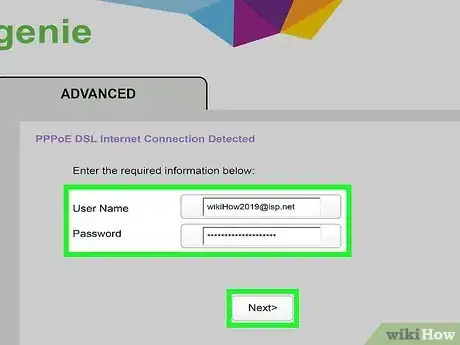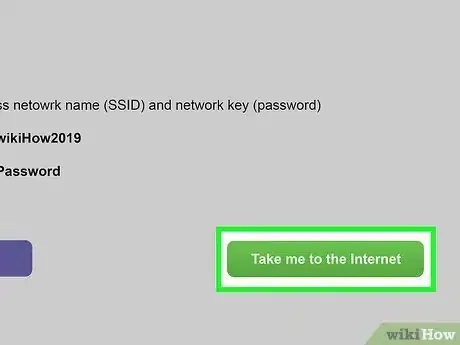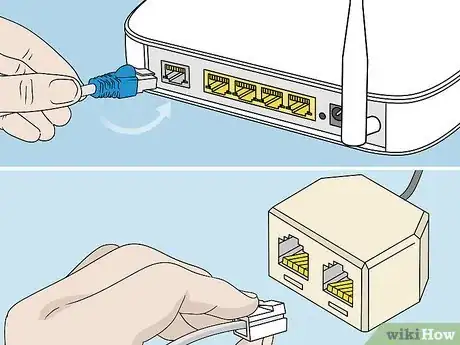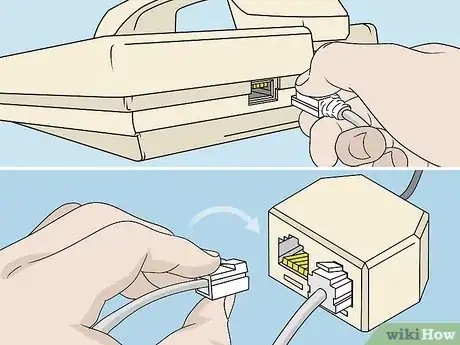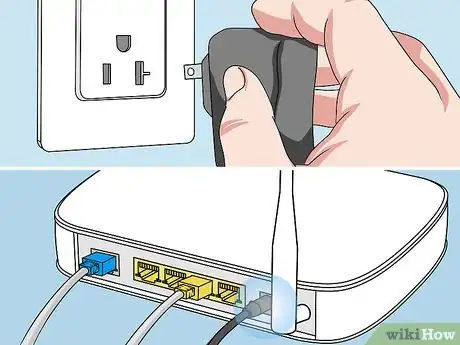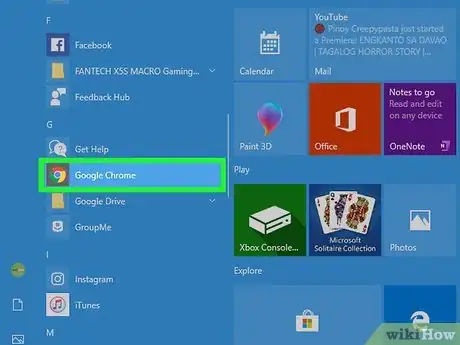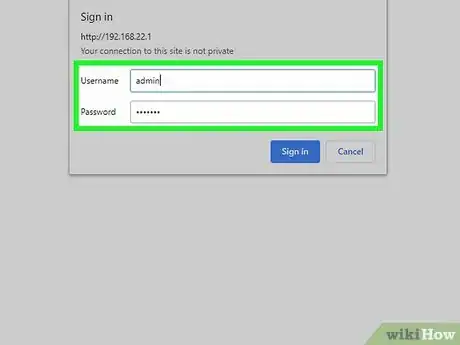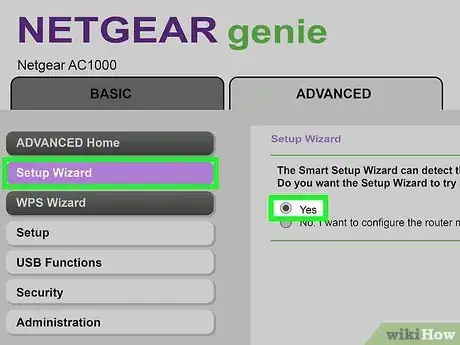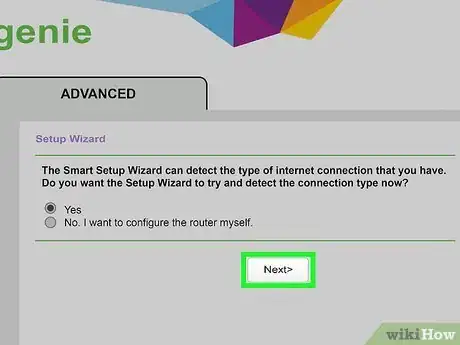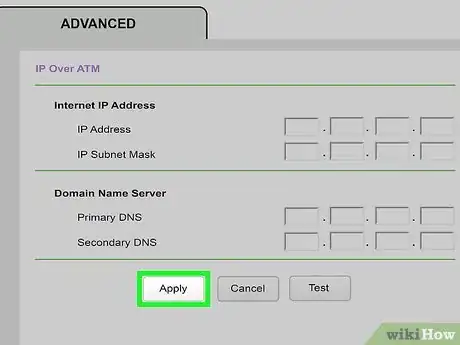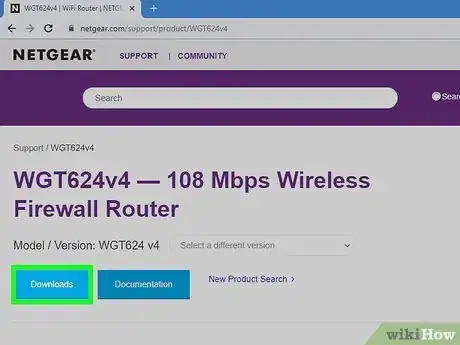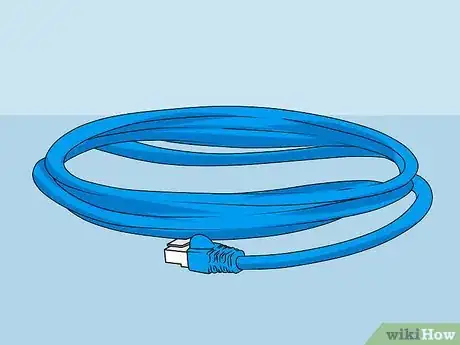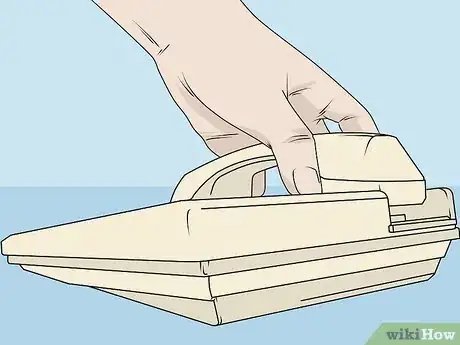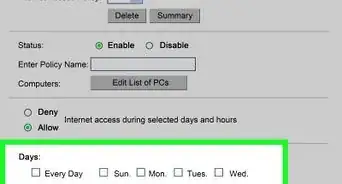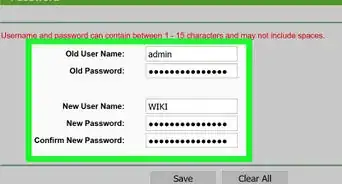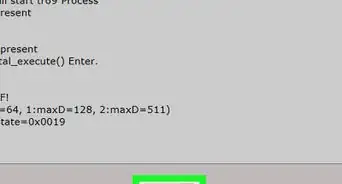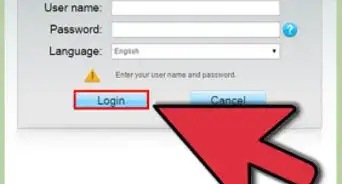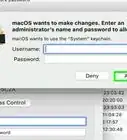X
wikiHow is a “wiki,” similar to Wikipedia, which means that many of our articles are co-written by multiple authors. To create this article, 14 people, some anonymous, worked to edit and improve it over time.
This article has been viewed 83,220 times.
Learn more...
If you got your Netgear router from your ISP, you usually won't need to do much configuration to connect it to your cable or DSL provider and get online. But even if you've reset your wireless router or purchased a brand new Netgear router that you need to connect to your modem, the setup wizard and other tools make it easy—we'll show you how!
Steps
Method 1
Method 1 of 5:
Cable Internet With Genie Interface (Newer Netgear Models)
-
1Power off your modem and Netgear router.
-
2Use an ethernet cable to connect your modem to the port labeled “Internet” on your Netgear router.Advertisement
-
3Use a second ethernet cable to connect your computer to any port labeled “LAN” on your Netgear router.
-
4Power on your modem and wait for all the lights to remain stable.
-
5Power on your Netgear router and wait for the “Power” light to remain solid green.
-
6Launch an Internet browser on your computer and type one of the following URLs into the address bar: www.routerlogin.com, www.routerlogin.net, or http://192.168.1.1. The correct URL will bring up the router login dialog box.
- Examine the label on your Netgear router to determine the correct URL if none of these URLs bring up the router login dialog box.
-
7Log in to your router interface using “admin” for the username and “password” for the password. These are the default login credentials for Netgear routers. The Netgear Genie setup wizard will display on-screen.
- If “Netgear Smart Wizard” displays on-screen in place of “Netgear Genie,” skip to Method Two in this article to finish setting up your router using the Smart Wizard interface. The Smart Wizard interface is only available on older models of Netgear routers.
-
8Click on the “Advanced” tab, then click on “Setup Wizard” in the left sidebar.
-
9Select “Yes” when asked if you want Netgear to detect your Internet connection, then click on “Next.” The setup wizard will take a few minutes to detect your Internet connection and display the “Congratulations” page when complete.
-
10Click on “Take me to the Internet” to verify your Internet connection is working. Your Netgear router will now be configured for use with your ISP.[1]
Advertisement
Method 2
Method 2 of 5:
Cable Internet With Smart Wizard Interface (Older Netgear Models)
-
1Use an ethernet cable to connect your modem to the port labeled “Internet” on your Netgear router.
-
2Use a second ethernet cable to connect your computer to any port labeled “LAN” on your Netgear router.
-
3Power off your computer, modem, and Netgear router, then power all three devices back on.
-
4Allow a few minutes for all devices to power fully back on, then launch any Internet browser on your computer.
-
5Type one of the following URLs into the address bar of your browser, then press “Enter:”http://192.168.0.1 or http://192.168.1.1. The correct URL will bring up the router login dialog box.
-
6Log in to the router interface using “admin” for the username and “password” for the password. These are the default login credentials for Netgear routers. You will now be logged into your Netgear router.
-
7Click on “Setup Wizard” in the left sidebar, then select “Yes” when asked if you want Netgear to detect your Internet connection.
-
8Click on Next.” Netgear will take a few minutes to detect your Internet connection.
-
9Click on “Next” again when your Internet type is detected. Your Netgear router will save your settings and be configured for use with your ISP.[2]
Advertisement
Method 3
Method 3 of 5:
DSL Internet With Genie Interface (Newer Netgear Models)
-
1Connect the Netgear router to your telephone jack using your DSL microfilter. The DSL microfilter is a small box that connects both your router and telephone to the telephone jack.
-
2Connect your telephone to the DSL microfilter using a small telephone wire.
-
3Use an ethernet cable to connect your computer to any port labeled “LAN” on your Netgear router.
-
4Connect the Netgear router to its power supply unit, then power on the router. The router will take approximately one minute to fully boot up.
-
5Launch any Internet browser on your computer. The Netgear Genie setup wizard will automatically display on-screen.
- Type one of the following URLs into the address bar of your browser if the setup wizard fails to automatically display on-screen: http://192.168.0.1 or http://www.routerlogin.net. These URLs will take you to the Netgear Genie setup wizard.
-
6Select “Yes” when asked if you want Netgear to configure your Internet, then click “Next.”
-
7Select your country from the dropdown menu, then click on “Next.” Netgear will take a moment to detect your Internet connection. When complete, the router login screen will appear.
-
8Type the username and password supplied by your ISP into the fields provided, then click on “Next.” This allows you to access your ISP’s network.
- Contact your ISP directly if you need help obtaining the username and password for your network.
-
9Click on “Take me to the Internet” to verify your Internet connection is working. Your Netgear router will now be configured for use with your ISP.[3]
Advertisement
Method 4
Method 4 of 5:
DSL Internet With Smart Wizard Interface (Older Netgear Models)
-
1Connect the Netgear router to your telephone jack using your DSL microfilter. The DSL microfilter is a small box that connects both your router and telephone to the telephone jack.
-
2Connect your telephone to the DSL microfilter using a small telephone wire.
-
3Use an ethernet cable to connect your computer to any port labeled “LAN” on your Netgear router.
-
4Connect the Netgear router to its power supply unit, then power on the router. The router will take approximately one minute to fully boot up.
-
5Launch any Internet browser on your computer and type one of the following URLs into the address bar: http://192.168.0.1 or http://192.168.1.1. These URLs will take you to the router login screen.
-
6Type “admin” into the username field, and “password” into the password field. These are the default login credentials for your Netgear router.
-
7Click on “Setup Wizard” at the top left corner of your session, then select “Yes” when asked if you want Netgear to detect your Internet connection.
-
8Click on “Next.” Netgear will take a few minutes to detect your Internet connection, and display the appropriate configuration page based on your network type.
-
9Apply the detected network settings so Netgear can complete the configuration process. The steps will vary depending on your type of Internet connection.
- Enter the login and password supplied by your ISP if using a PPPoE or PPPoA connection type.
- Click on “Apply” if using a dynamic IP address for connection type.
- Enter your IP address, IP subnet mask, primary DNS, and secondary DNS if using an IP over ATM or fixed IP connection type. This information must be supplied to you by your ISP.
-
10Click on “Apply” after entering the necessary credentials based on your Internet connection type. Your Netgear router will now be configured for use with your ISP.[4]
Advertisement
Method 5
Method 5 of 5:
Troubleshooting Netgear Router Configuration
-
1Try downloading the latest firmware for your Netgear router from http://support.netgear.com/ if configuration fails to work. In some cases, outdated firmware can prevent you from being able to establish an Internet connection.[5]
-
2Reset your Netgear router using these steps if you continue to have difficulty connecting to the Internet after configuring your router. A reset will restore your router’s default factory settings and can help resolve software problems associated with your router.
-
3Try using different ethernet cables or telephone wires as needed if you’re having difficulty configuring your router or connecting to the Internet. Faulty cables and hardware can prevent you from being able to effectively set up your router.
-
4Contact your ISP for further assistance if you are still unable to configure your Netgear router using the login credentials supplied by your ISP. Netgear does not have access to login credentials supplied by your ISP, and will not be able to assist you with connecting to the Internet.[6]
Advertisement
Community Q&A
-
QuestionWhat can I do when my router will not allow my computer to connect?
 R2_d2000Top AnswererTry to restart both the router and computer. If that does not work, then call the router manufacturer for assistance.
R2_d2000Top AnswererTry to restart both the router and computer. If that does not work, then call the router manufacturer for assistance. -
QuestionWhen I connect an antenna the signal is weaker. What should I do?
 R2_d2000Top AnswererI would recommend not connecting the antenna, since it is clearly making things worse.
R2_d2000Top AnswererI would recommend not connecting the antenna, since it is clearly making things worse.
Advertisement
References
- ↑ http://kb.netgear.com/app/answers/detail/a_id/22697/~/netgear-router-installation-on-cable-isp---genie-interface
- ↑ http://kb.netgear.com/app/answers/detail/a_id/119/~/router-installation-on-cable-internet-service-provider---smart-wizard-interface
- ↑ http://kb.netgear.com/app/answers/detail/a_id/22717
- ↑ http://kb.netgear.com/app/answers/detail/a_id/120/session/L2F2LzEvdGltZS8xNDM5MjQ0NDA0L3NpZC9lQTR1eEJ0bQ%3D%3D
- ↑ http://kb.netgear.com/app/answers/detail/a_id/24309
- ↑ http://kb.netgear.com/app/answers/detail/a_id/22090
About This Article
Advertisement
